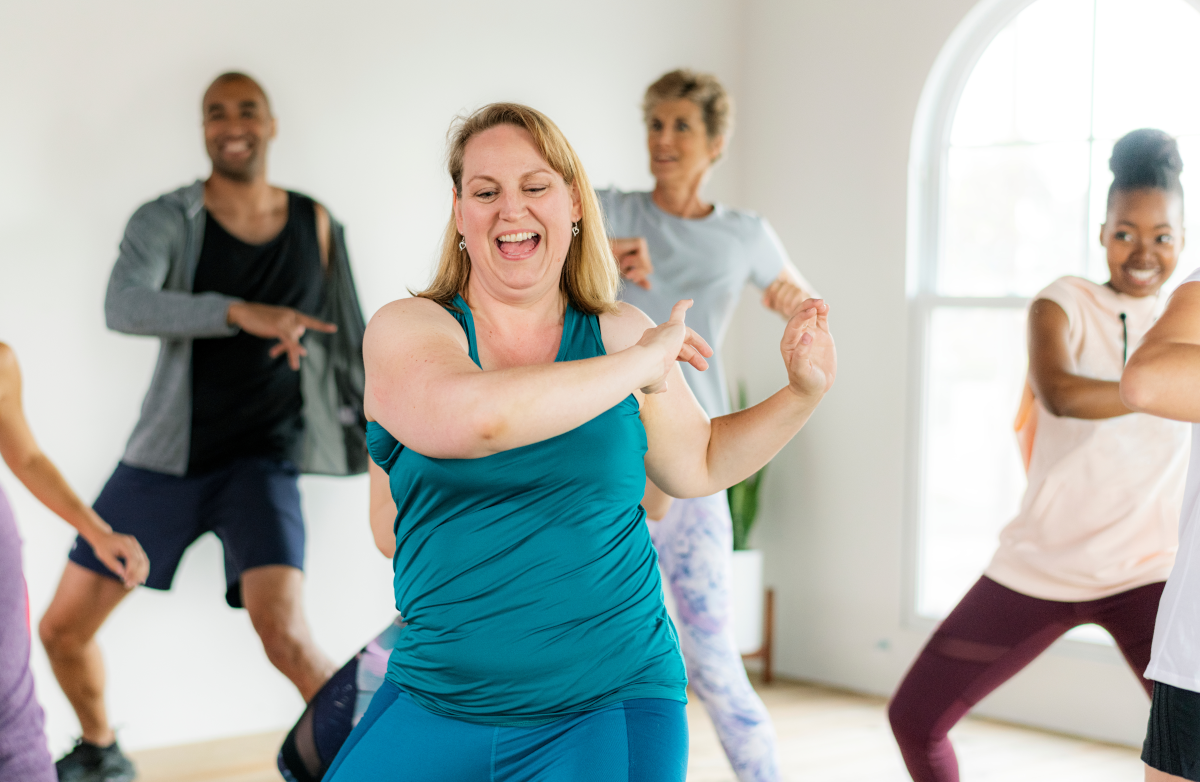Gone are the days when women felt intimidated by the weight room and the macho men inside! Recognizing the benefits and importance of strength training in a well-rounded routine, more women are making their way into the weight room to achieve their weight-loss and strength goals. Yet, despite much progress in defeating old myths, there are still those women who are hesitant to add weights to their workouts. If you're one of them, learn why it's time to bust your excuses and start lifting.
1. "Lifting weights will make me gain weight and look bulky."
Although a pound of muscle and a pound of fat weigh the same, the pound of muscle is denser and, therefore, takes up less space in the body. As such, two women who weigh 140 pounds can look completely different. Even if the number on the scale increases, more muscle means you'll lose inches and fit into smaller sizes.
Testosterone is the primary hormone responsible for muscle growth. On average, the levels of testosterone in adult males is seven to eight times higher than in adult females, meaning it is much more difficult (or nearly impossible) for a woman to gain the same kind of muscle mass as a man. In fact, it takes a strict training regimen and a highly specialized diet for a woman to develop significant muscle. If you see a woman with bulky muscle, know that her physique isn't something that unintentionally resulted from the average strength training program.
2. "I don't know how to get started."
Many people struggle to understand the complexity of more dedicated strength training that they see on social media or in the gym, but the truth is that you don't need hours in the weight room or a complicated program to reap the benefits of strength training. A simple, 15- to 20-minute full-body routine two or three times per week will improve strength and muscle definition. In general, start with one to three sets of each exercise, and eight to 12 repetitions per set. Before you head to the gym, pick one exercise from each category below to create an effective full-body strength workout.
Quads: Squats and lunges (There are many variations of these exercises, but a simple squat or forward lunge are good for beginners.)
Chest/Shoulders/Triceps: Chest press, pushups, shoulder press
Back/Biceps: Dumbbell rows, shrugs, pull-ups
Core: Planks, pendulum, bicycle crunches, Supermans
3. "Strength training won't burn as many calories as cardio does."
When comparing a 30-minute cardio workout to a 30-minute strength workout, the strength workout does burn fewer calories. However, that's not the only thing to consider when deciding which workout is best and whether you should be choosing between the two.
Strength training helps maintain lean muscle tissue and strength, both of which decline naturally as we age. After age 30, people lose as much as three to five percent of their muscle mass each decade; regular strength training will help minimize that loss. As a bonus, the more muscle and less fat you have, the more calories you burn at rest.
A balanced workout routine includes both cardio and strength training. Don't focus solely on the calories you burn in one workout. Instead, think bigger picture about the long-term benefits each type of workout can provide.
4. "I don't have access to a gym."
You don't need a gym with fancy equipment to strength train. A simple resistance band or just your own bodyweight is enough to provide a challenging strength workout. If creating your own routine feels too complicated, try a DVD or check out the thousands of workouts on YouTube. If you're looking for a routine to try, here's a no-equipment workout to get you started.
Start with one to three sets of each exercise and eight to 12 repetitions per set.
Planks (start with 30 seconds, adding more time as you become stronger)
Now that you know how simple strength training can be and why it's so important for every woman to do, it's time to get moving and show everyone how strong you can be!













